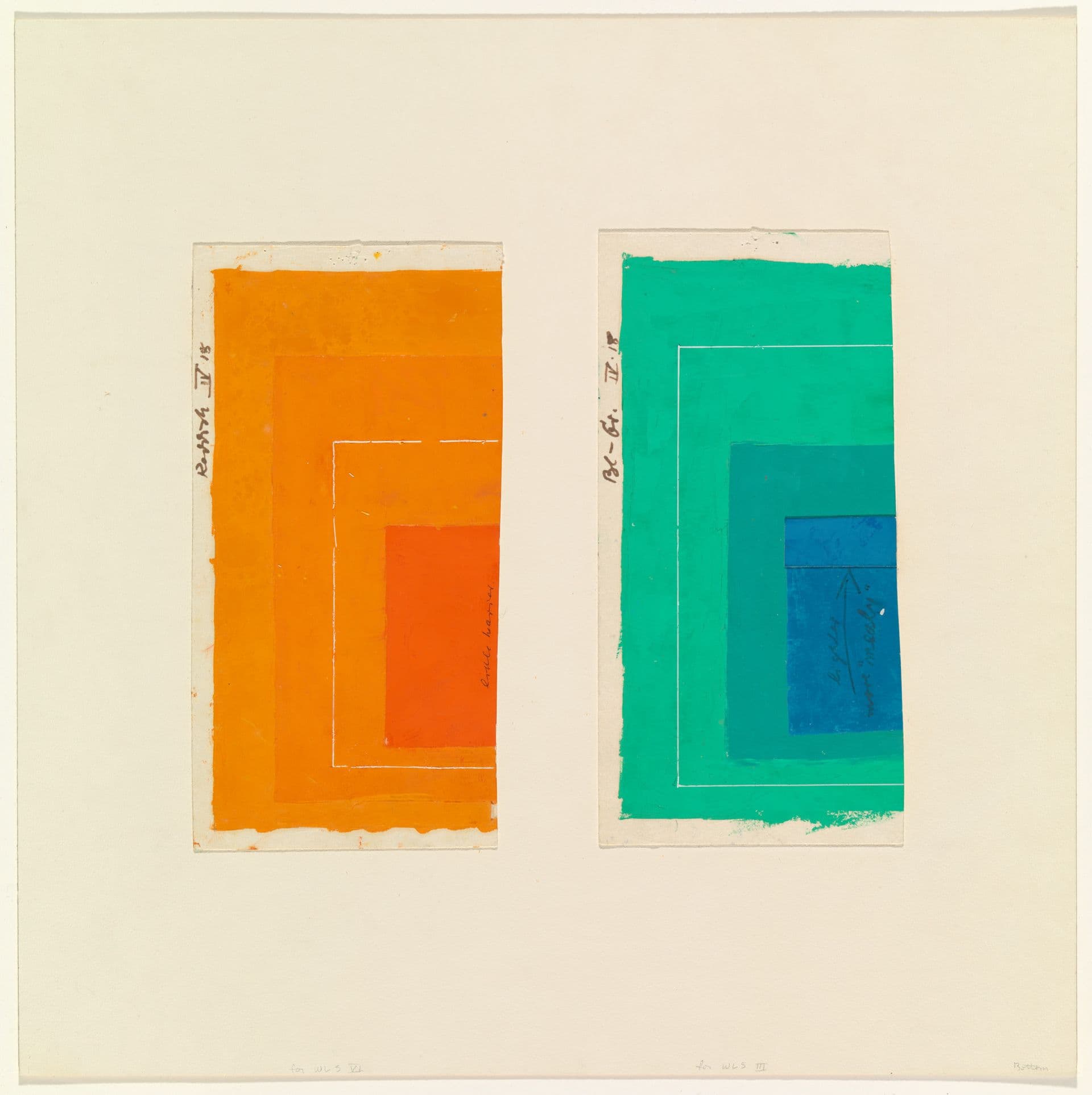So here we are. My first workshop in 1965. there you see Patrick Proctor and David Hockney on the right side. And, my first hydraulic press, the beginning of this, mania I have for making big machines. And there's Josef Albers and the white line squares, which now become our first publication. What happened was I started this, young company in the back of a frame shop in Los Angeles as a custom printer, which was at that time, the only option reading aloud to somebody going into the print field, wanting to publish, which I did.
and in the course of doing that, I found myself, getting into Financial Hawk. And, eventually we had to make a decision either, close the doors or take on partners. So we took on two partners. We got some funding, and, the first project we decided to do was Josef Albers. Because of my great relationship with him from Tamron Days.
So I told Josef that I was working on a better registration system. and as Frank pointed out, it's, it's something we've always been chasing in the print business. how to fit things together. And Joseph thought, if you can do this, I have a project for you. And the project is to be able to put a color inside of a color without any overlap.
And that was the, the, the great issue at that time. And we solved it. And of course, white land squares is, as a part of that, you'll have to remember that historically. Now, what we're talking about in the early 60s is a is a period where art was becoming extremely important in American society. the public was becoming extremely interested.
A lot of, young directors of, corporations and a lot of young professionals were, were really turning to the arts. and, and supporting that. A lot of institutions were starting, print clubs were cropping up in almost all institutions, and it was almost a fashionable thing to do, to collect prints. And so we were at, at that moment at the right place, time wise.
And California was a free place. And so that was also a good place to be. the shop was, struggling along, and all of a sudden we found ourselves on a roller coaster, and things were going all of our way at this confluence of all this stuff happening at one time was a little heady, but nevertheless, we we did our best to keep up with it.
And the first real breakthrough passed the Albers, which was reading my calling card into the New York world, of art. it was the only thing I could really take there that I thought was, going to be acceptable by all these East Coast artists. Well, that's what I did. And, when the first artist that I started to work with, of course, was Joseph again.
And, he by this time, he was nearing the end of his life, and he was feeling that he wanted to do something very, very special, with printmaking. And he had been thinking a long time about it, and it worked out that he had developed a series of oil, little oil paintings, some of which are here in the Australian collection, to show me how he wanted to do pure silkscreen.
and he wanted to do it with no overlap. You want each color to be on white paper, to have the maximum luminosity and our registration system had gotten a little bit better by this time. We were able to pull it off. we had never done it in silkscreen. but that became the least of our problems.
Joseph, towards the end of his life, had honed his eye down to the point where the slightest shift in color disturbed him. and he really demanded and wanted, these very close, harmonies of colors which are very, very difficult to achieve in ink. And so if he wasn't bringing me a leaf from the garden or, twig or something to say, this is the color I want.
he was trying to explain it verbally. What happened is we did hundreds and hundreds of color proofs to achieve, great instrumentation, one, two and mitered squares and never before. And it was a challenging time. It was a wonderful time. And it was something that couldn't have happened. And another kind of workshop since I had just begun again.
and it was really just a few of us, and there wasn't a great deal of expense involved and, and, extensive proofing.



